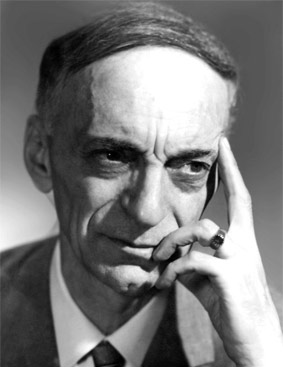
Khachatur Yesayan
Khachatur Yesayan (1909-1977) is one of the famous representatives of the twentieth century Armenian pictorial art, who has his own peculiar painting style. This artist, born in Kars, enriched the genre of landscape with his new painting achievements. He got his professional education in Yerevan College of Fine Arts and Industry. Yesayan was inspired by Yeghishe Tadevosyan following his artistic traditions. Like Tadevosyan, Yesayan could reach the principles of impressionism. He has got a number of wonderful and colourful landscapes showing the nature of Armenia in a purely impressionistic style.
As we know impressionism is a 19-th century artistic movement. One of Claude Monet’s landscapes was named ”Impression, Sunrise” (1872). This is where the term ”impressionism” derives from. Impressionism made a drastic change in art.
This method of painting enhanced the pictorial art giving it a new breath and vitality. Impressionists who directly expressed their immediate impressions on the canvas, certainly contributed to the artistic means development of realistic painting. These artists examined the peculiarity of light at different hours during the day, the impact of sunlight on colours. They worked in the open air creating scenes by first impression. Ethereal colours are typical of such paintings. Outstanding representatives of this style of painting are Claude Monet, Camille Pissarro, Alfred Sisley and Pierre-Auguste Renoir. There are also impessionistic features in works of Edgar Degas and E’douard Manet.
With his landscapes Khachatur Yesayan brought in a new style and colouration to the direction of impressionism. In the Armenian pictorial art he established himself as a sensitive landscape painter, one of the best representatives of intimate landscape painting. Like Camille Corot, Yesayan also passed his personal lyrical mood to his works.
The main features which brought Yesayan’s works close to the impressionistic style are the lightness, airiness, ethereality and natural clearness of the colour used in his paintings. In some of his pictures we can see the transparency as well as harmony of light and shadow, which is typical of impressionists. In his landscapes Yesayan, like French impressionists, especially Monet, managed to express the warm shine of sunrays, the gentle rustle of leaves, the fresh gust of the wind and the subtle tune of trees bending down over the river. The painter himself confessed many times that he admired the art of Monet. Anyway Yesayan didn’t duplicate, he created in his own manner.
Khachatur Yesayan is one of the best plenerists of Armenian art. He highly values the freshness of the landscape and does not overload the surface of the canvas with unnecessary layers of paint. Most of his canvases are luminous, full of purity, sincerity, directness and freshness. Painted in a free and fluent way, with vivid attractive colour shades Yesayan’s works seem to be real.
The artist had no intention to astonish the viewer with grand size or an extraordinary way of painting. He preferred to create small-size landscapes, which despite their format have always attracted the looker with their positive natural emotional charge, making the letter to love, to dream, to consider, to admire- thus evolving high spirits. In Yesayan’s landscapes we seldom see people. Even if there are figures, their faces are not shown in details, as the painter doesn’t individualize their characters. Although he tends to express human traits through colours of nature within the landscape.
In his impressionistic landscapes Yesayan exposed the beauty of his motherland. He painted the splendid hidden corners of Byurakan, the gardens of Nork, Oshakan and Ashtarak, the Zangezour, Arzni as well as Yerevan with its magnificent architectural structures, narrow streets, pink brick buildings, and wet shiny asphalt roads after rain reflecting the surrounding colours.
He painted new-breath springs, golden-leaf autumns, graceful and slender poplar-trees, blooming peach and apricots trees, sunshine dawns and breezy sunsets. We should mention that for instance M. Saryan’s landscapes mostly present the majestic and severe mountains of Armenia whereas Yesayan prefers to show out the hidden intimate beautiful corners of his mother country. In such paintings is common the directness of impression. Yesayan uses tiny detached brushstrokes. Here is one of the works ”Autumn” (1946), where we can see much air and play of colours. The detached brushstrokes create the impression of vibrating air. In this canvas the artist created an atmosphere full of air, a picture rich in colours and shades.
In his work ”Midday” (1946) applying this impressionistic method Yesayan illustrates the shine of sunrays peeping out of tree branches. This painting is notable for impressionistic fresh and bright colours.
”The Landscape of Arzni” (1940) is full of unusual freshness, where we can see the influence of Monet’s landscapes.
By fresh and immediate impressions got from the nature Yesayan created the painting named ”Landscape-May” (1954). It is an optimistic poetic picture with subtle and transparent colours.
The landscape ”In the park. Arzni” (1975) is another work of interest by this artist.
Depicting the thick and green trees of the park it reminds some of Monet’s works. But we should note that unlike Yesayan the French artist Monet doesn’t avoid painting human figures in his landscapes. He introduces their images and individualizes them.
The landscape ”Apricpt tree” (1976) is one of the last period works of Khachatur Yesayan. In this painting the petals of blooming apricot flowers seem to merge with the skies and melt away in the air.
Thus, we could see that Khachatur Esayan’s impressionistic lyrical landscapes are remarkable for their fresh breath, a subtle sense of colours, transparency, tenderness and immediate reproduction.
Sources:
- Ներսիսյան Լեմս, Բնանկար, Երևան, «Զագակ 97», 2011:
- Гюрджян Габриель, Зрелость – «Литературная Армения», Ереван, 1959, № 5, стр. 110-113.
- Հովհաննիսյան Ռ., Հայրենի բնության գովերգուն – «Սովետական Հայաստան», Երևան, 1959, 13 հոկտեմբերի, էջ 4:
- Սիլվիա Մանուչարյան, Մագիստրոսական ատենախոսություն, Ե., 2014:




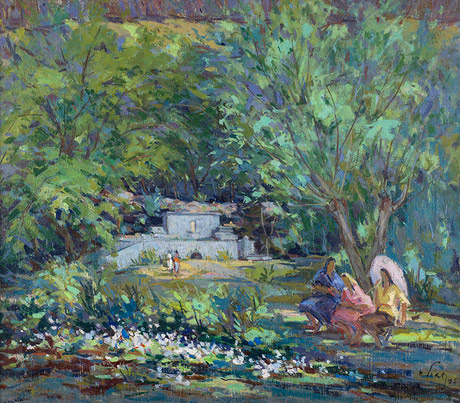
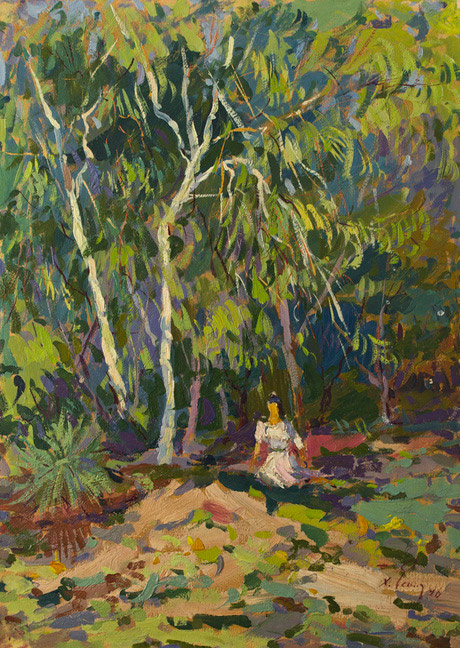

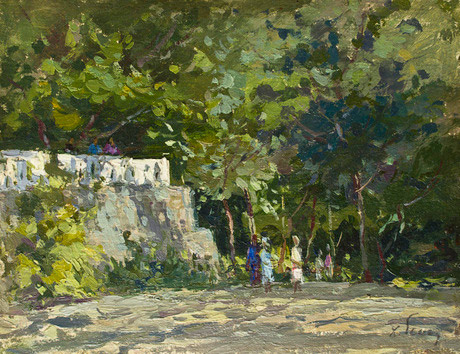
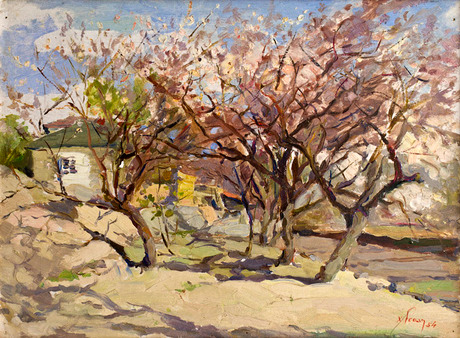
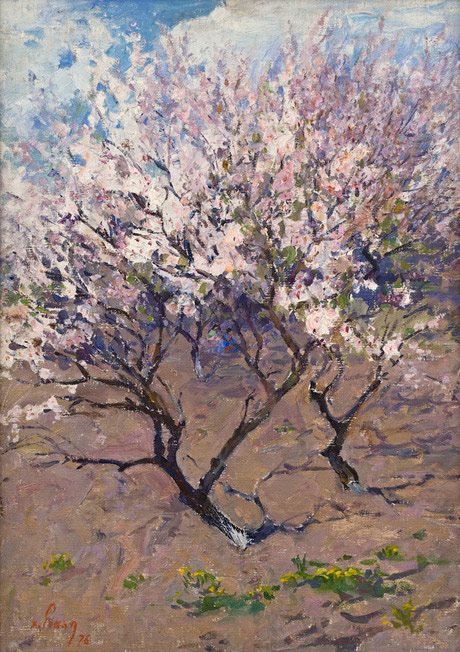
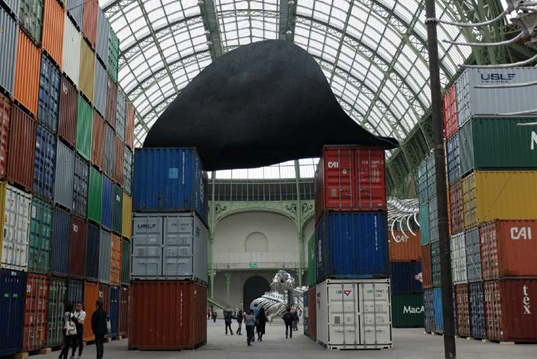

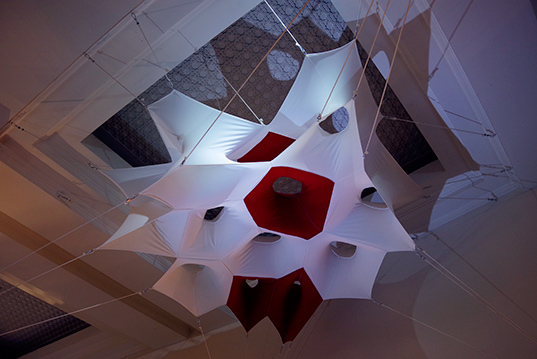
Leave a Reply